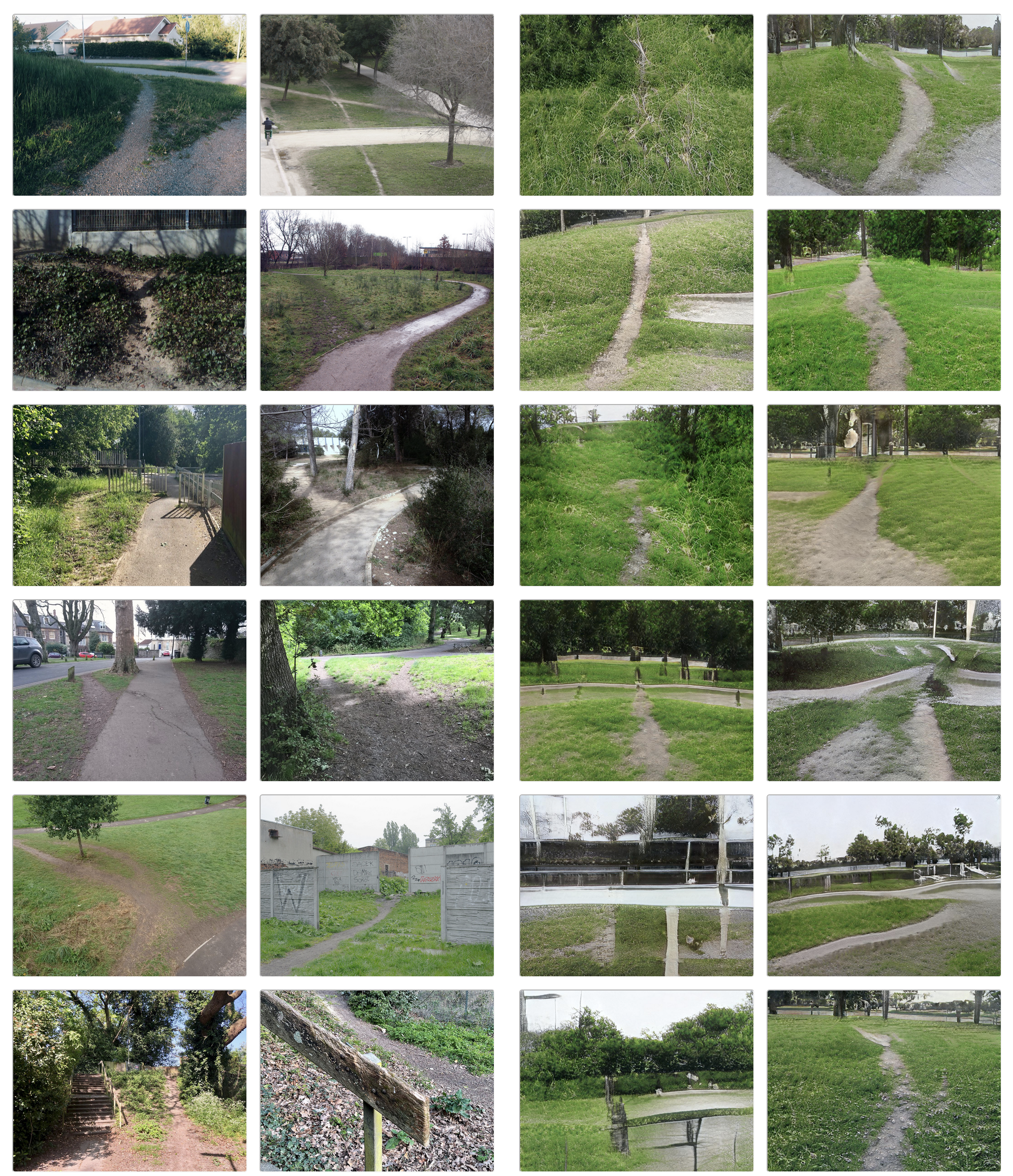Web of Deviations
research, development
Desire paths are informal paths created by repeated use, often emerging as shortcuts. As traces of use or wear that indicate preferred methods of interaction with places or systems❶, these paths are described to “record collective disobedience”❷. Using a collection of images from flickr group 'Desire paths'❸ and machine learning techniques, I generated new images of desire paths. Investigating structures that track deviation from enclosed systems, the generated desire paths take on fragmentary, discontinuous and anti-structural forms.
OUTPUT
a collection of ML-generated images of desire paths using the input data to the left


The force of desire is productive in its ability to reorient, fuel and generate alternate landscapes. But desire is not a one-way street. We both make places and are made by them through a continuous
co-constitutive, relational process.
How does desire create surfaces and boundaries? How are we shaped by its e/affects?
How does governed space prescript our movement?
How do the structures in our lives make some things reachable and others out of reach?❹
How might we craft insurgent desire paths toward more just and pleasurable worlds?
credits & references
❶ Universal Principles of Design, O’Reilly
❷ Networked Utopias and Speculative Futures, Su Ballard, Zita Joyce, Lizzie Muller
❸ Flickr group 'Desire paths'
❹ Sara Ahmed, Queer Phenomenology
Thank you! Andre Lepecki, Allison Parrish
technical details
tensorflow, python, runway ml, premiere, javascript